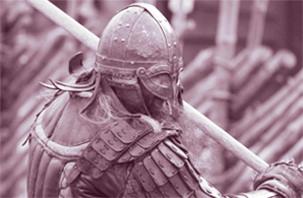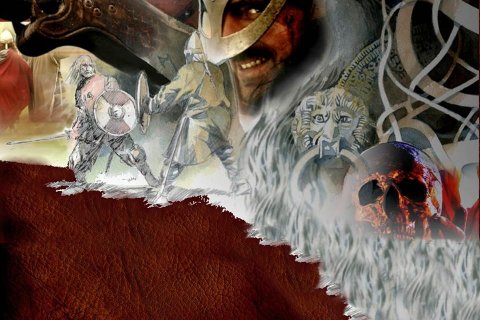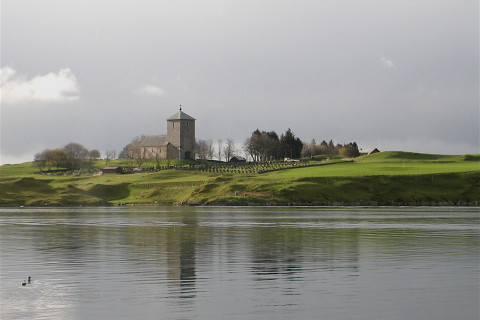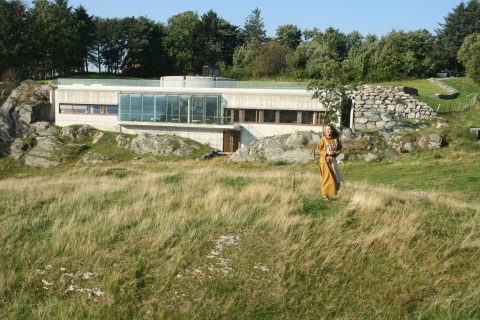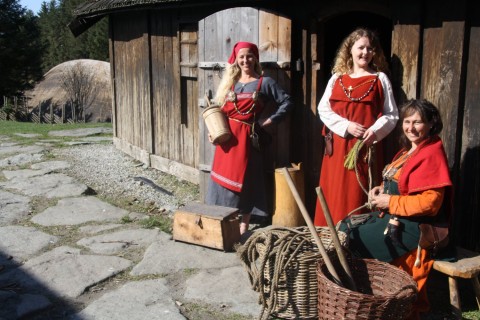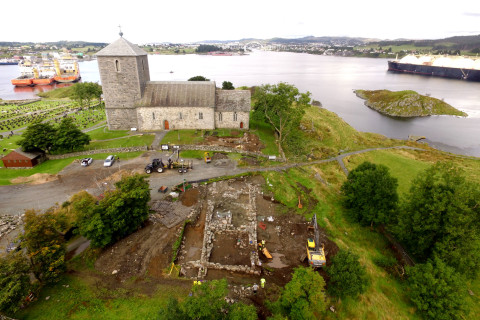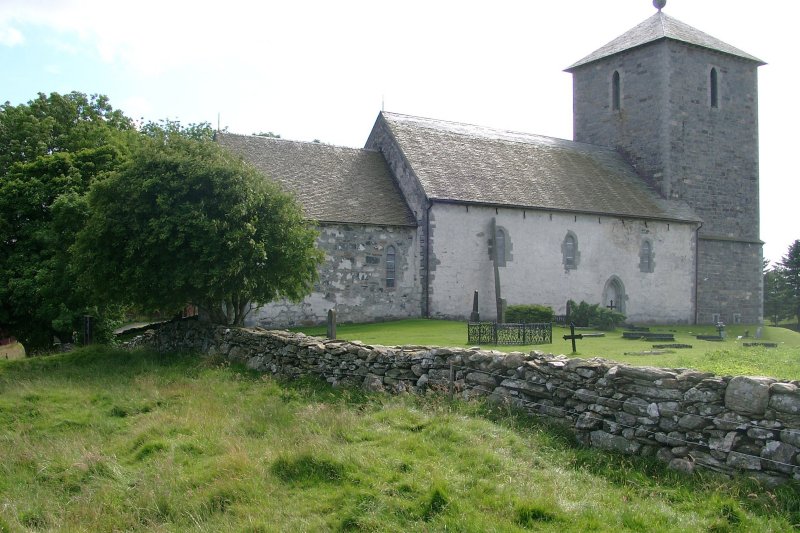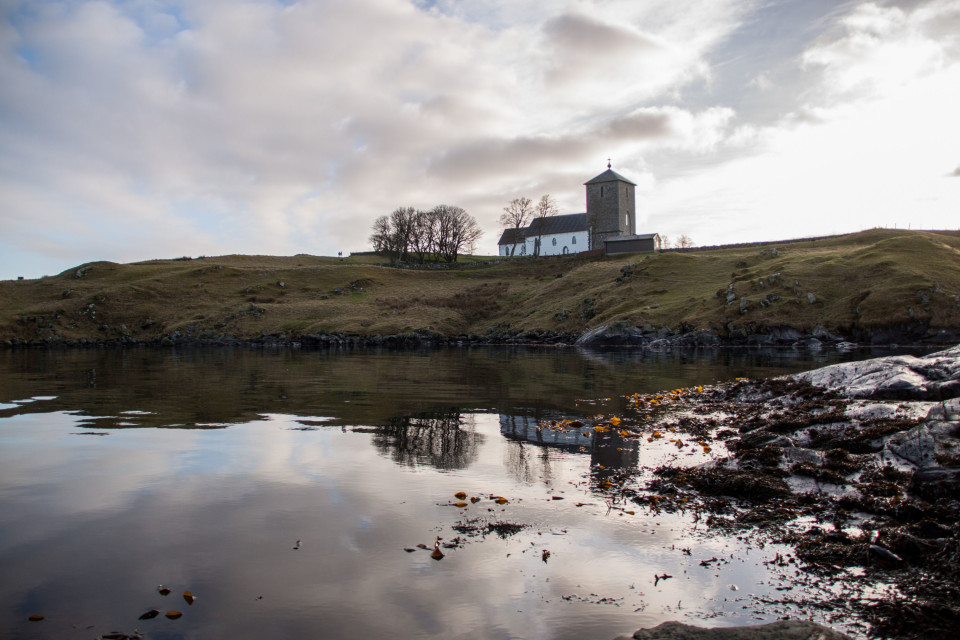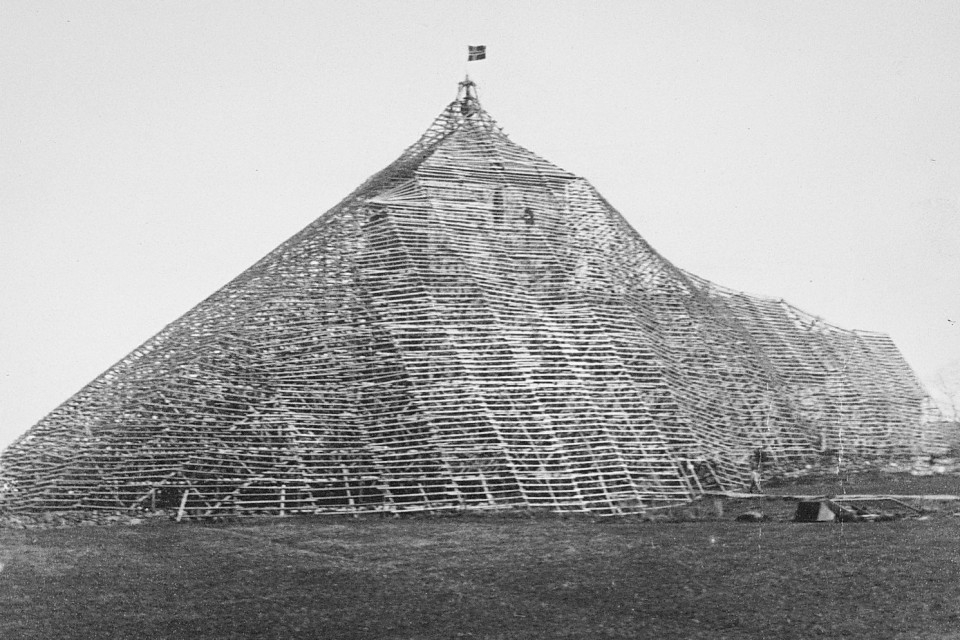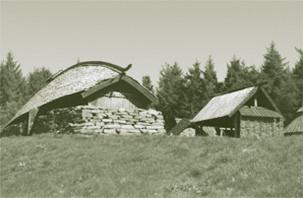St. Olav’s Church
Text: Marit Synnøve Vea
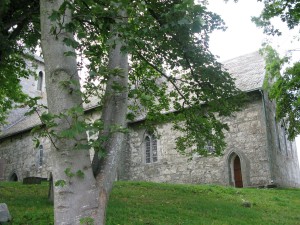
The chancel door opens outwards – a clear sign that there was once a passageway outside it. The covered passageway led to the royal hall. (Photo Marit S. Vea)
St Olav’s church (St Olaf’s church) at Avaldsnes was built by King Håkon Håkonsson around 1250 as part of the royal manor complex at a time when Norway’s power was at its greatest. In 2017, the ruins of a fortified royal hall was excavated south of the church. The hall ended in a gate tower. From the tower a covered passageway in two floors led up to the chancel.
Look inside St Olav’s church
A CHURCH FOR PILEGRIMS
Håkon Håkonsson consecrated the church to St. Olav, and the church became an important stopping place for pilgrims going to Nidaros. There are still place names and tales from North Karmøy which remind us of this pilgrim route.
In earlier times St Olav’s Church had both an Olav’s altar and an altar that was dedicated to the Virgin Mary, and perhaps there was also a St Michael’s altar.
On the north side of the church we can see a bricked up door. This was the pilgrims’ entrance, as they always had to enter any church with their backs to the north. If you take the same way as the pilgrims you can see curved marks and runes from both olden and more modern times on the grey church walls.
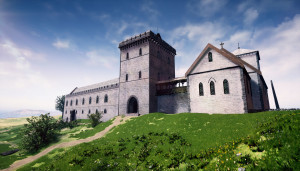
Avaldsnes Royal Manor around 1300. (Ill. Arkikon)
THE COLLEGIATE CHURCH
Early in the 1300’s Håkon Magnusson made St Olav’s Church one of only four royal collegiate churches in Norway, the others being at Tønsberg, Bergen and Oslo. Now St. Olav’s Church at Avaldsnes is the only one of the four left.
The royal collegiate churches were the ‘universities’ of their time, a place where the King could have his own trusted priests and advisers, all the other churches being under the control of bishops appointed by Rome. The royal collegiate churches were under the direct control of the King and were an important instrument in his power structure. All this tells us that the Royal Manor at Avaldsnes had a very important position in the 1200’s and 1300’s.
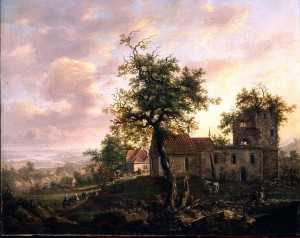
“Avaldsnes on Karmøy 1813″, Painting by I.C. Dahl. (Photo J. Lathion, National Gallery)
DECEY
After the Reformation in 1536, the church fell into disrepair. In the midst of the 19th Century the restoration work started and in 1929 the restoration was completed and the church was restored as you see it today.
ST OLAV’S CHURCH DURING THE 2. WORLD WAR
During the 2. World War the Germans wanted to tear down the church tower because British pilots used it as a landmark when they should bomb the strait Karmsund. But the National Heritage authorities together with the locals managed to prevent it because they built a wooden skeleton over the church. The intention was that the church should look like a hill from the air.
From all over Karmøy young candidates for confirmation came to Avaldsnes to be confirmed illegal in the St Olav’s church.
Back

